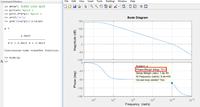fateme m
Junior Member level 3
Why is it that if the non-dominant pole is 3 times larger than the gain crossover frequency, the phase margin will be about 70 degrees?
is there a book that this is discussed?
is there a book that this is discussed?
